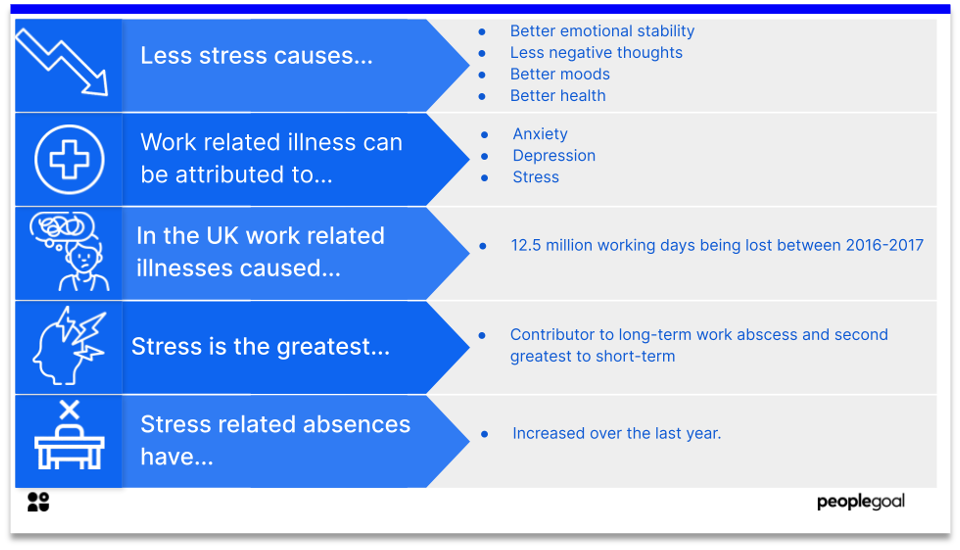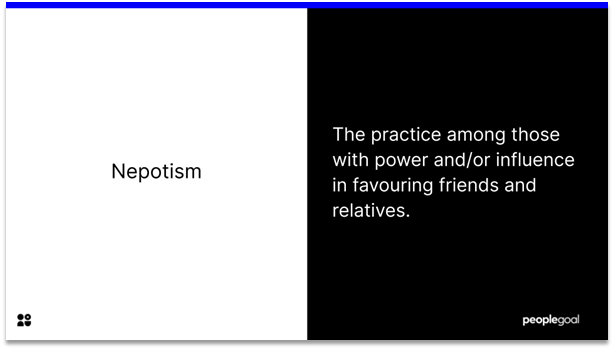Looking forward to 2025, it has never been more crucial for HR leaders to develop strategies to look after the welfare of their staff, and introduce employee well-being initiatives. The pandemic has magnified well-being issues due to the increasingly blurred boundaries between work and home life, and has also highlighted the link between poor mental health and reduced productivity.
Workplace health and wellbeing has been placed front and centre as anxiety, depression and burnout have skyrocketed due to social isolation and the disruptive changes to the daily work routine.
Businesses have come to realize the importance of prioritizing flexible work, remote corporate well-being programs and giving employees a voice within the organization. They responded to the new forces by introducing company well-being initiatives for employees. According to Gartner, by June 2020 over two-thirds of organizations had introduced new wellness benefits to support employees’ mental and emotional wellbeing.
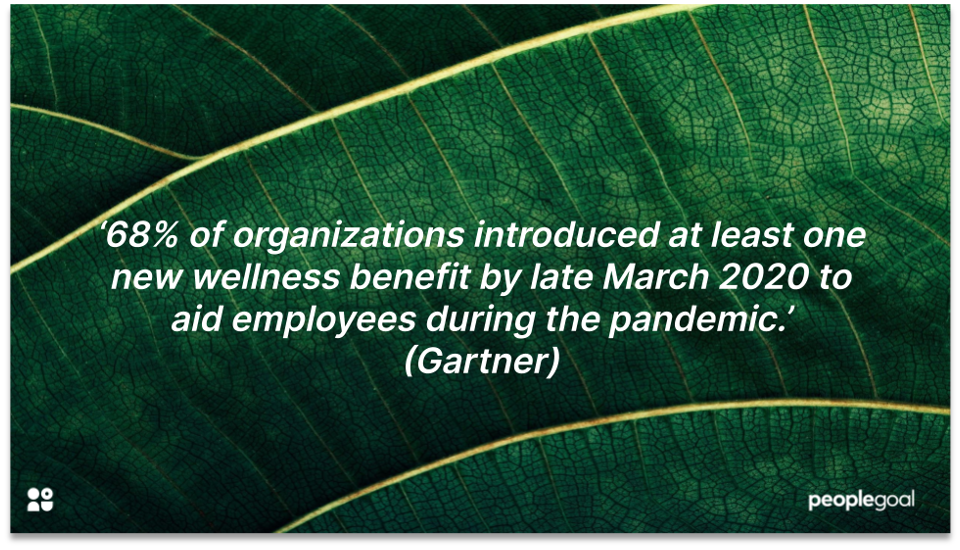
At the same time, many employers who were ill-prepared and didn’t have the right benefits or culture in place to support well-being are now trying to find ways to pivot through this prolonged health crisis.
It is almost certain that remote work is here to stay for many organizations, even when it is possible to return to the office environment, therefore it is crucial to have a robust virtual well-being program in place that caters specifically to the remote workforce. The fundamental question HR teams needs to ask is what employee wellbeing initiatives should be instated in 2025?
Well-being in the time of coronavirus
The COVID-19 pandemic has raised serious concerns about corporate health and well-being across the globe, and brought it to the top of the business agenda. Despite the fact that remote working has provided more flexibility in the way we work, it is linked to a higher rate of burnout since it has become increasingly difficult to disconnect.
Longer working hours, reduced face-to-face communication and increased feelings of isolation have also led to poor mental health within many businesses. According to CIPD’s health and well-being at work survey report, three-fifths of organizations have seen an increase in mental health conditions such as anxiety and depression in 2025.
3/5 of organizations have seen an increase in mental health conditions such as anxiety and depression
In addition to the emotional stress caused by working remotely, many are facing additional stressors such as the worry of becoming ill, managing childcare and lack of physical activity. Combine this with financial insecurity, mass layoffs and furlough – it comes as no surprise that health and well-being rates have plummeted.
HR teams must provide the resources that will help their teams maintain a better work-life balance and support a holistic approach to well-being which covers the following aspects – emotional well-being, physical well-being, financial well-being and social well-being.
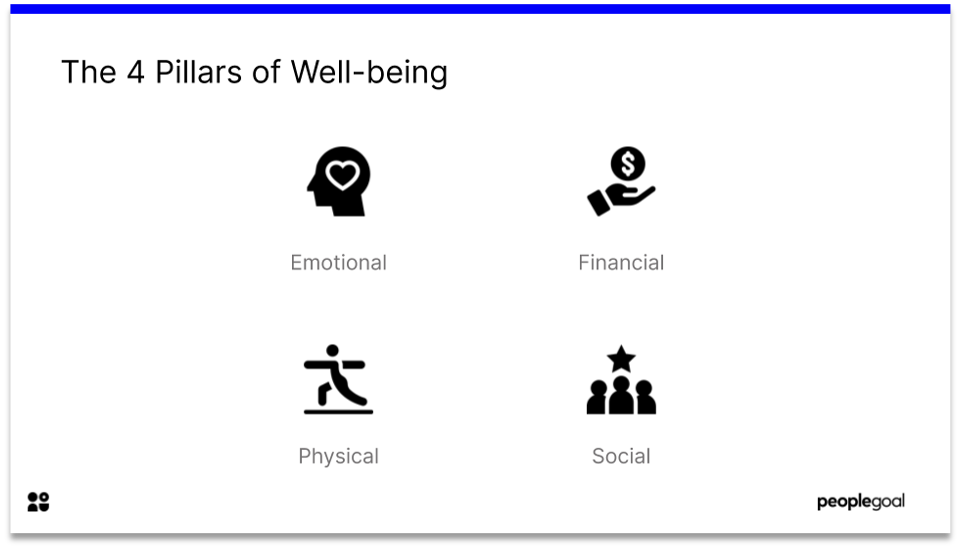
Why is employee well-being important?
If employers place employee health and well-being at the center of their business model, the return on investment can be significant. Research from PricewaterhouseCoopers suggests that there is a positive link between the introduction of well-being programs for employees and improved business key performance indicators. Reduced stress will also drive positive employee engagement. The top benefits of well-being in the workplace are:
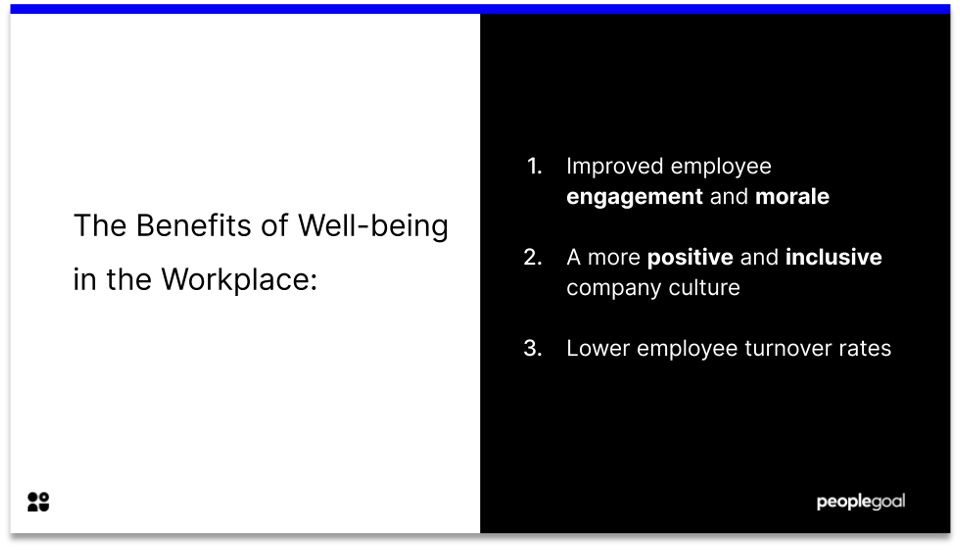
- Improved employee engagement and morale (and therefore productivity)
- A more positive and inclusive company culture
- Lower employee turnover rates
Top employee well-being initiatives for 2021
Employee Assistance Programs (EAPs)
Employee Assistance Progams or EAPs are employer funded benefits that offer employees confidential counselling and advice on a wide range of work-related and personal issues. EAPs are intended to help employees deal with problems that might subsequently impact their work performance, health and well-being by giving employees access to a counsellor, free sessions with a mental health professional and referrals to therapists for example.
Whilst most organizations already had EAPs in place prior to the pandemic, it remains important to expand the range of EAP benefits that are available, and increase communication about these benefits to all employees. This might include increasing access to medical and counselling services covered by EAP, adding virtual sessions and investing more resources in the program.
Given that 3/5 of business have seen an increase in mental health conditions like anxiety and depression, it has become paramount for businesses to provide meaningful support to address mental health issues by ensuring that all employees have access to counselling services and health care professionals.
Technology-led virtual meetings
It is critical to stay connected as remote working becomes the ‘new normal’, and organization’s must work to replicate meaningful social interactions through online tools and technology. Virtual meetings and Zoom gatherings are a really helpful way to boost working relationships by imitating real-life office interactions and allowing teams catch up in an informal setting.
Businesses need to examine their ability to digitally collaborate and connect, ensuring they have a variety of virtual team bonding initiatives to keep employees engaged. Social activities might include virtual coffee breaks, themed lunches, happy hour quizzes and drinks which will allow employees to have fun with their teammates in a more relaxed setting. It is also important to dedicate time to remote team-building activities and exercises during the work day, as this will strengthen friendship bonds within the team and help improve remote communication.
That being said, be wary of ‘Zoom fatigue’ and plan your virtual timetable with care so as to not overwhelm employees with out-of-hours activities they feel obliged to attend. The best way to do this is to take a broad approach and run a variety of events that appeal to different people. In addition, consider subsidising access to online classes like live fitness, meditation and healthy cooking which employees can join on an ad hoc basis.
Visibility, pulse and well-being surveys
It has become increasingly important to leverage regular pulse surveys to identify areas of the business that are seeing high levels of stress, anxiety or burnout and better understand how employee needs have changed during the pandemic. Visibility surveys will help leadership gather vital insights into the overall picture of engagement within the organizaion, pulse surveys give organization’s the freedom to measure engagement on a regular basis and well-being surveys will identify other areas that require the companies attention.
Find out more about running employee experience surveys with PeopleGoal here
The data gathered will allow HR teams and senior leaders to make targeted, data-driven interventions where they are needed most, and provide them with a better understanding of their employees’ experience and requirements.
Running regular surveys, and more importantly acting on the results, is a great way for businesses to show they care about their employees’ well-being – that they are measuring it and using it to make decisions that will have a positive impact on the company as a whole. It is important to note that your efforts will fall flat if you do not communicate the findings back to employees and make a commitment to taking action on the results.
Ongoing communication and support
Whilst implementing initiatives to ease the challenges onset by COVID-19, it is important to commit to improving employee health and well-being on a long-term scale. The best way to do this is build an employee-centric culture that is based on ongoing communication and support.
After measuring the overall level employee experience in your organization, create an action plan that will help foster an employee-centric working environment. The data collected will expose any common patterns or issues, allowing you to identify areas that need improvement and build this into your strategy. In addition, it is essential to create a culture of continuous feedback where multi-directional feedback (especially from employees to the senior leadership team) is actively encouraged.
Employee well-being initiatives should be supported by the senior leadership team, and sufficient resources allocated towards them. Improving employee well-being should also be incorporated into the overall business objectives, as well as be included in any strategic planning. Finally, employers should continuously encourage their employees to participate in workplace well-being initiatives and make suggestions for improvements. This will help facilitate a culture of well-being, with the employee at the center.
Key takeaways
A change in mindset and shift of economic resources to initiatives that better support employee well-being and good mental and physical health is needed more than ever before. As we get accustomed to the ‘new normal’, we need to learn how to leverage technology and resources to give employees the best support possible, helping them to succeed in both their personal and professional life.
The future of employee health and well-being is very promising. It was a topic was was neglected before the pandemic, viewed as a “nice-to-have” rather than a “must-have” employer strategy. The pandemic subsequently revealed how flawed this approach was, and now it’s up to businesses to take the necessary steps to reap the rewards of a happy and healthy workplace.
A holistic well-being program will not only result in better employee engagement and organizational performance, but also help foster a positive company culture where employees feel heard and understood.
Want to improve employee health and wellbeing in the workplace? Check out our article, How to Create an Employee Wellbeing Survey.
PeopleGoal can help you create meaningful change in your organization. Why not book a demo today to find out how we can support your employee wellbeing efforts?
Ready to 3x Your Teams' Performance?
Use the best performance management software to align goals, track progress, and boost employee engagement.


